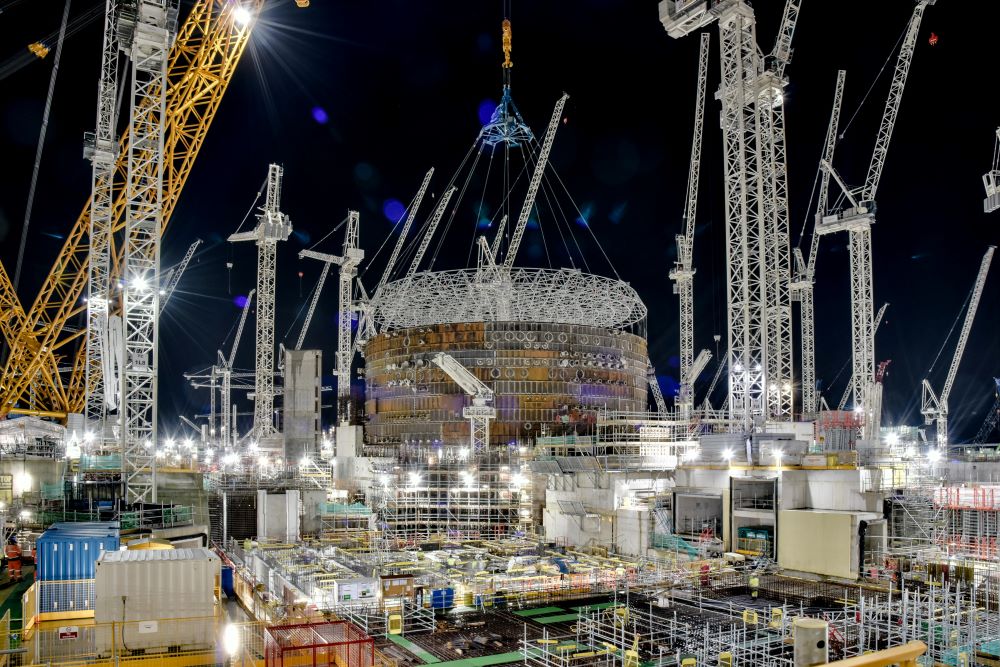Tamlite Lighting, one of the UK’s largest independent lighting manufacturers, has welcomed the Investment Property Forum (IPF)’s latest research, which examines the cost of energy efficiency improvements in existing commercial property.
In the 81-page report, the IPF concludes that lighting upgrades “should always be considered in a package of improvement measures” for enhancing energy efficiency in commercial buildings. The IPF is an individual members’ organisation for those operating in the UK commercial real estate investment market.
The report assesses a range of discrete and combined packages of improvement measures for their impact on Energy Performance Certificate (EPC) ratings, energy use, carbon emissions, and cost. These assessments take into account changes in the EPC modelling method that took place in June 2022, which could result in a change (downgrade) in EPC rating for some buildings.
Meanwhile, the Minimum Energy Efficiency Standard (MEES) regulations for commercial property are set to tighten: Commercial property landlords have until 2028 to improve the EPC of their assets to a C rating, with a minimum EPC of B required by 2030.
Improvement options for complying with EPC post-2022
Previously, if buildings were aiming for an EPC rating of C, changing the lighting (from T5 to LED) would be a relatively cheap option and could, in many scenarios, achieve an EPC of C. For a B rating, a building would typically need LEDs and an air source heat pump (ASHP).
Under the latest methodology, IPF’s analysis shows that to achieve an EPC B, asset owners may need to invest between £200/m² and £800/m² on a package of the three key improvement measures – lighting, heat pumps, and ventilation.
The report authors applied the seven years payback test, as defined in the MEES guidance, to all energy and carbon-saving packages across all building typologies. The results show that the only improvements that pay back within seven years are those that are part of a planned refurbishment scenario, and these are limited to lighting and ventilation improvements.
Commentary from Tamlite Lighting
Richard Wharrad, Group Manager & Head of Sustainability and Social Value at Tamlite Lighting, commented:
“As a lighting manufacturer committed to a more sustainable built environment, we welcome the IPF’s recognition of the role modern LED lighting systems play in delivering more energy-efficient buildings, and the return on investment they offer.
“Commercial property landlords face considerable challenges as the sector transitions to net-zero carbon, with the need to adhere to regulatory compliance, and achieve a return on investment. Lighting upgrades continue to represent a highly cost-effective strand of the solutions available for improving buildings’ EPC.”
Lighting upgrades considered in IPF report
The report assesses cost scenarios across a range of building typologies where upgrades are carried out for general lighting systems that have an average lamp efficacy of less than 60 lamp-lumens per circuit watt (60 lm/W) and that serve areas greater than 100m².
Upgrades include the replacement of existing lighting and controls with new LED luminaires delivering over 120 (lm/W), together with presence detection sensors and daylight harvesting sensors to relevant spaces.
The report’s methodology
2024’s ‘Costing Energy Efficiency Improvements in Existing Commercial Property’ represents an expanded and updated version of the 2009 edition. The data-driven study, was led by Currie & Brown with additional modelling support from Introba, and is based on a set of seven building typologies, now including build-to-rent and student accommodation. It reflects the latest EPC methodologies and has been expanded to reflect the implications for net-zero carbon targets, in particular, Carbon Risk Real Estate Monitor (CRREM) pathways.
A range of discrete and combined packages of improvement measures have been assessed, and a fully downloadable Excel tool is available that allows the user to apply the findings to specific cases they might be working on.
Richard Wharrad added: “The IPF’s new research serves as an essential resource for commercial property asset managers striving to balance the often complex and competing demands for improving property performance.”
Summary of the report’s key findings:
- The only energy and carbon-saving improvement packages for buildings that pay back within seven years are those that are part of a planned refurbishment scenario, and these are limited to lighting and ventilation improvements.
- For most buildings, a combination package of three improvement measures – lighting, ventilation and heat pumps will meet the requirement of an EPC B.
- Changing the heating type to direct electric or heat pumps can significantly improve the EPC rating of any building, assuming it is replacing gas. This is due to the decarbonisation of the UK grid and therefore lower carbon factors for electricity.
- As the carbon emissions factor for electricity will continue to fall, the impact on EPC rating will continue to favour heat electrification, and by 2030 some buildings may find it impossible to achieve an EPC B without electrifying heat.






